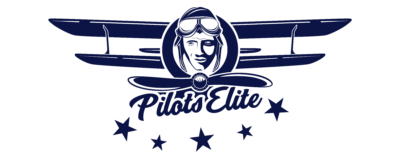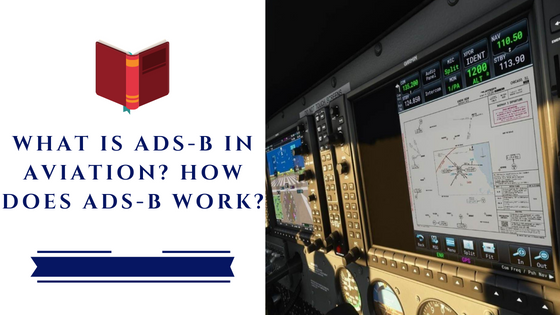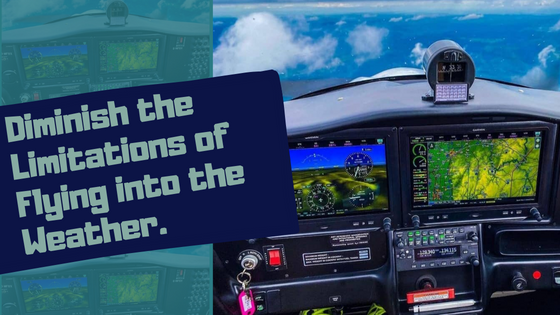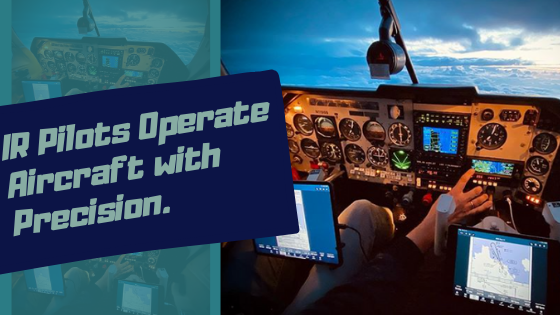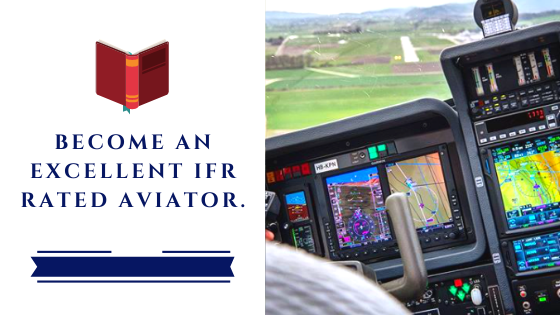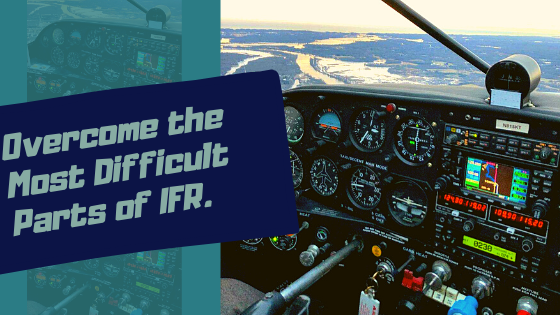Instrument rating costs more due to expenses of IFR flight operations.
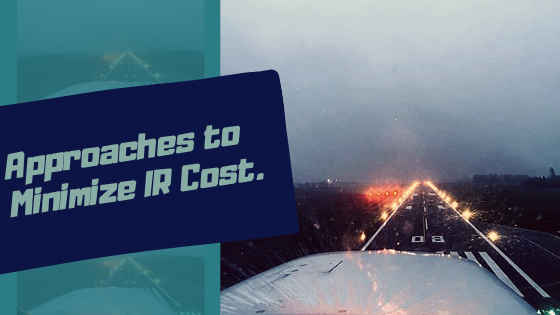
Instrument rating cost is affordable, yet there are ways to reduce the cost of IFR rating.
Obtaining an instrument rating can be costly if you don’t plan your training lessons well. Thus, I shared my knowledge of how a private pilot can reduce instrument rating costs and acquire an IFR rating.
I included a breakdown of prices of instrument rating together with the factors that affect IFR rating cost. So the factors that can change the cost for instrument rating are:
- The aircraft you choose for flight training and the type of instrument panel it has;
- The rate of hiring a flight instructor;
- Cost of the ground school;
- Written test enrollment and the examination fee;
- Checkride examiner fee and the aircraft rental for check-ride.
As a bonus, I discussed ways how you might reduce instrument training costs.
Getting an instrument rating will cost any pilot around 8,000 USD. The cost is variable depending on the location, aircraft, and the progress of individual pilots. The slower pilots adapt to instrument flying knowledge, the more likely they will spend on flight training.
You can reduce the instrument rating cost by planning your flight hours.
The essential requirement for instrument rating is 40 Hours of flying time in an instrument airplane.
Flying 40 hours in an instrument-rated aircraft is costly compared to a non-IFR-rated plane.
An intelligent student pilot plans his flying hours, acknowledging he may get an instrument rating in the future from the early stage of his training.
The FAA requires 50 hours of PIC cross-country flying time for instrument rating applicants.
A student pilot can keep this requirement in mind and fulfill IFR rating requirements ahead of time.
A private pilot won’t have to fly unnecessarily to apply for an instrument rating in the future.
To save money further:
An instrument rating trainee can fly 10 hours in a simulator and the rest of the 30 hours in an actual aircraft.
Many private pilots are unaware of this rule, and often flight schools don’t disclose this.
Flying 10 hours in a simulator and 30 hours in actual aircraft for IFR training is acceptable by the FAA standards.
As flying in a simulator or advanced aviation training device is less costly and acceptable, you will prevent spending foolishly extra.
How choosing the right aircraft can reduce instrument rating costs?
As a private pilot, you can choose to do an instrument rating in a Cessna 172 or a Diamond DA 20 Katana.
Assuming you got your private pilot license in a Cessna 172, you have experience operating a DA20 aircraft.
So, you have the choice to get your instrument rating in any of these two airplanes.
However, renting a Cessna 172 will be much cheaper than renting a DA20 airplane.
If you are tight on a budget, your best pick would be an instrument-rated Cessna 172 for your instrument flight training.
Training in an affordable airplane will save you a reasonable sum of money.
I want to discuss another controversial matter around aircraft:
- Selecting an aircraft with steam gauges over a glass cockpit is wiser.
There are multiple reasons why I believe old-fashioned steam gauges with a GPS available in the aircraft is best for an instrument rating.
The reasons are:
- It is a lot easier to transition from a steam gauge airplane to a glass cockpit as a pilot regardless of your flying experience;
- The second reason, renting an aircraft with a glass cockpit is higher than renting a traditional steam-gauged airplane.
If you want to save some bucks, choose a traditional airplane, and you can fly an aircraft with a glass cockpit at your convenience.
Flying in a glass cockpit and then learning to accept steam gauge will be rugged.
Training in a glass cockpit airplane is better if you intend to work in an airline. Commercial aircraft use a glass cockpit, which is convenient for IMC operations.
There is always a continued debate on which instrument panel is best for instrument rating training. Regardless you must choose the one that suits your aviation goals and budget.
Consider the instrument flight instructor’s cost.
According to the FAA, a pilot must take instruction from a certified flight instructor – an instrument for at least 15 hours.
As a trainee pilot, consider having the CFII with you for 40 hours. Because that will keep you safe on IMC flights, you can learn much more from your flight instructor.
The cost of a flight instructor is a must and minor. But the price will vary depending on the flight instructor. Typically the hourly rate for a CFII is 50 USD.
This cost will differ if you wish to fly with a veteran flight instructor. Veteran flight instructors have so much knowledge to share. Training with a veteran flight instructor, you will learn a lot indeed.
But studying theory yourself will make you a much better and safer pilot.
One way to reduce instrument rating costs is by paying for the instrument rating course.
<Q> You can choose to do instrument training in a PART 141 school. Flying in a PART 141 course is often accelerated and sometimes cost-effective.
If you have the money, pay upfront, and you may negotiate a bargain.
You can avoid calculating money for renting aircraft and flight instructors separately and save some fees.
A vacation in the middle of the training will cost you more money.
An instrument rating is not as straightforward as VFR flight training. It is a lot more complicated.
Many of us took a break for six months during our private pilot training after getting our first solo.
And when you return to flying after six months, you spend an extra five hours brushing up your flying skills and perfecting your landing again.
If you deal with your instrument rating in this manner, trust me, you will fly many more hours just to become proficient.
As an instrument pilot, you will test your flying skills, and the required 40 hours is not enough to learn everything.
Instrument pilots become overwhelmed by cockpit tasks, and it is easy to forget the task flow in IFR flights.
Occasionally, training will delay building operational habits in an IFR flight.
Hence, fly frequently during the training phase to save money and energy.
Stopping your flight training even for a month can take you behind in your practice and forget some crucial techniques for instrument flight, which will lead to repeating the exercise and paying more money.
Ground school cost is unavoidable.
Taking ground school is a must for an instrument rating. The cost for the ground school isn’t much, and it prepares you for the IFR written test.
But the genuine hurdle is when you go to the flight and can’t remember a thing from your ground school training.
It is a lot more common than you may think.
Private pilots going for instrument ratings find it difficult to remember too much information they studied in ground school faster and mess up in actual flight.
The ground school lessons and understanding it help instrument pilot trainees massively during a flight.
So what can you do if you fail to understand during your ground school?
You are not going to take ground school lessons over and over again. That will cost you more and more money.
Get your hands on all the free resources you get online.
There are tons of excellent youtube videos. Many blogs and materials will help you understand instrument lessons clearly.
The better you understand, the better you will become at instrument flying.
You have two benefits by actually studying using the free materials online:
- You will improve in instrument flying and adapt to instrument flying quickly;
- Studying free materials will prepare you for your FAA instrument written test.
Likewise, if you are unwilling to take a physical ground school for your instrument rating, there are IFR training courses online. Check them out. Upon completion of online courses, you will get an endorsement for the FAA instrument rating knowledge test.
Cost for written test.
The cost of a written test is negligible. It is only 150 USD for one time, and you will get a 10% discount if you have an AOPA membership.
But the real question is, will you pass the exam during your first attempt?
Passing the instrument rating knowledge test is not difficult. It is all about how well you studied and prepared for the test.
The test doesn’t have anything extraordinary. However, preparing for the test is vital, as I mentioned earlier.
Study using free online resources and watch videos on youtube. Perhaps you can purchase an online course that will save you a lot of money in the long run. Why not dedicate some time before you take the exam studying?
Online IFR training courses can help by teaching you visually and understanding techniques you may have never learned in your actual flight training.
Tips and tricks for instrument flight can be crucial to remember the critical thing for an instrument flight’s safe operation.
Take an online course and save yourself the trouble.
Attempting multiple times to pass this test will cost you more money. So that is not an option if you truly intend to obtain an instrument rating in a budget.
Consider the check-ride budget and designated pilot examiner fee.
Check-ride costs are the last money you must spend before getting your instrument rating.
You must allocate around 600 USD to rent an airplane for at least an hour plus the check pilot fee.
A check pilot will take oral and practical exams to test your skills.
Passing the instrument rating check-ride will depend on everything you have learned during your training.
If the check pilot is satisfied, you will get your instrument rating.
Failing an instrument rating check-ride is common for pilots. Thus do your best to prepare yourself.
You can use a simple flight simulator to practice at home and study well.
If you fail the check ride, you have to count more money. You will rent aircraft for the second time and likewise pay for the examiner again.
If you don’t want to spend more, prepare yourself ahead of time and get your instrument training and rating as quickly as possible.
